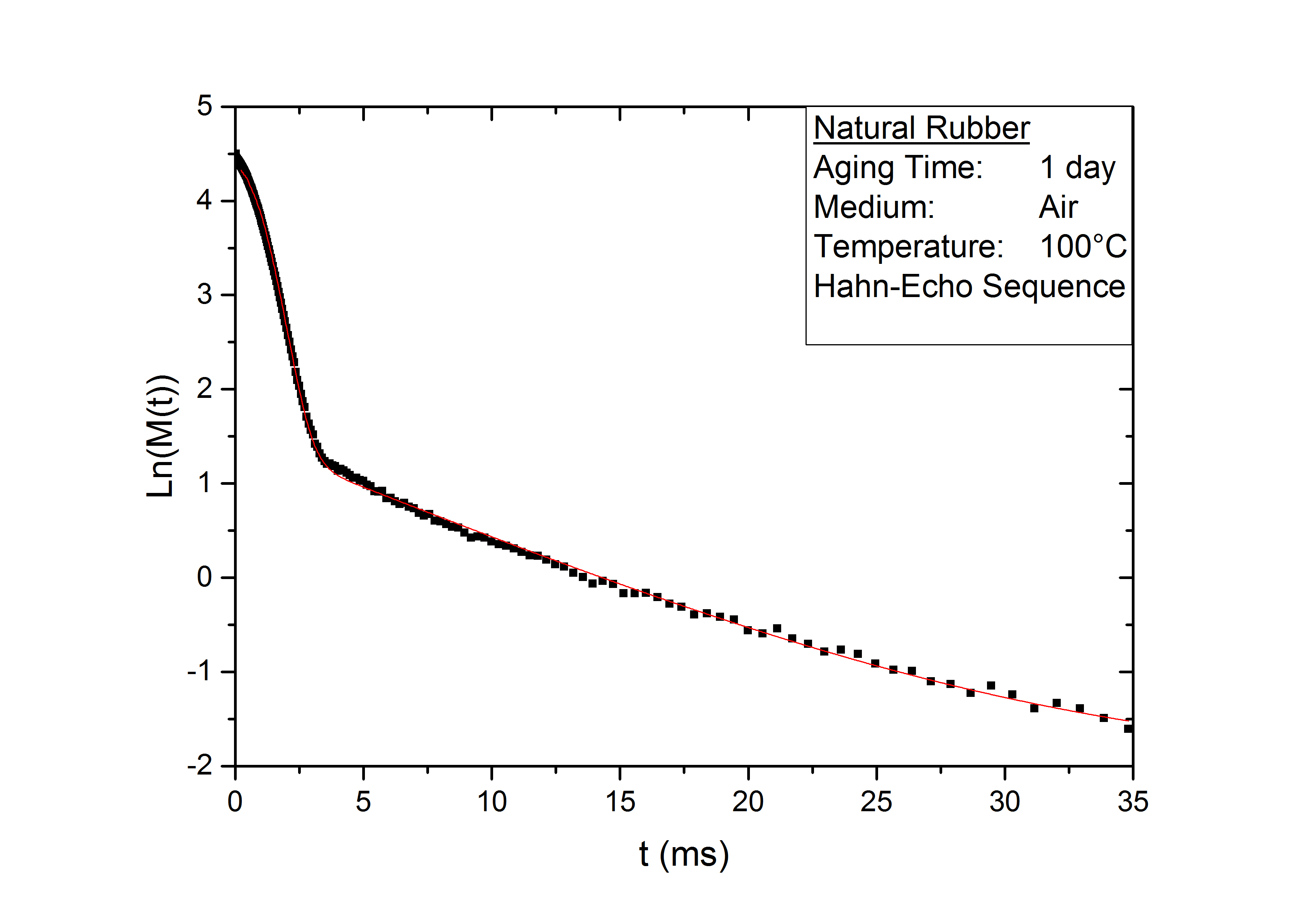Measurements with nuclear magnetic resonance spectroscopy (solid state NMR) allow the non-destructive determination of changes in network structure caused by aging, the plateau modulus, or the swelling grade. Typical values measured in solid state NMR for elastomer characterization are the decrease of magnetization and the spin-spin relaxation time T2. From the adjustment of magnetization decrease, the molar mass of the network arc between two cross-linked sections can be determined.
During the aging of elastomers, thermo-oxidative degradation and formation of new cross-links occur simultaneously. Additionally to chemical cross links, filler materials also form new cross-links. For this reason, changes in filler network (polymer-filler interactions) also need to be examined. A comparison with other characterization methods and vibrational resistance experiments allow conclusions on the effects of aging on the molecular structure.
 Fraunhofer Institute for Structural Durability and System Reliability LBF
Fraunhofer Institute for Structural Durability and System Reliability LBF